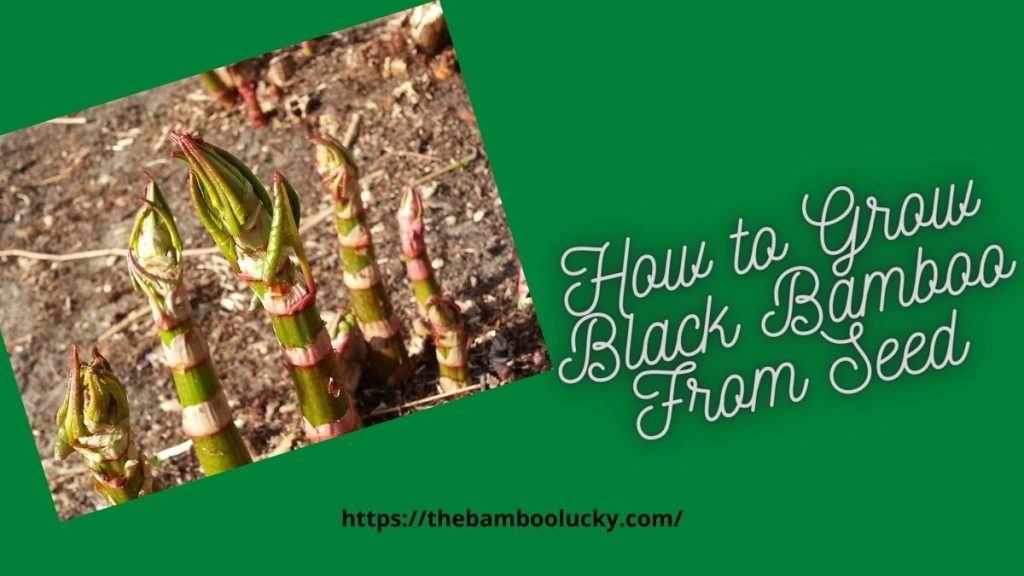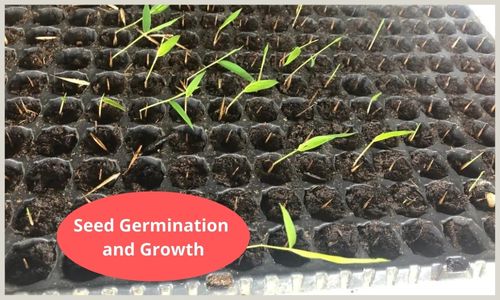Black bamboo is very unique as compared to other bamboo varieties that you can buy right now. It’s non-invasive and unlike some other bamboo species, it doesn’t cause any damage to the surrounding area when planted.
This type of bamboo is very common in Southern China and parts of the United States. Bamboo is an excellent wood substitute and often found in homes in these areas as well.

Black bamboo is very fast-growing and can be used to make musical instruments, make charcoal bread, and timbers. After 6 years, it reaches its full height of about 50 meters and its trunk turns black.
After bamboo sprouts grow for one to three years, they turn completely black. Some species of black bamboo include Punctata and Muchisasa.
The best type of bamboo to grow is the black bamboo. It’s unique, so you should be able to get it into any area where you want to grow bamboo. Learn more about how fast it grows and other tips you need to know about it, if you want to make your own living from growing it.
Table of Contents
Black Bamboo Species
The black bamboo has an incredible advantage over other species of bamboo: it’s harder, stronger and lasts much longer than most other bamboo species. In the United States and Canada, the black bamboo can survive temperatures as low as -40° F (-40° C). The black bamboo grows quickly, but can be trimmed back after growth season ends.
Black bamboo looks like an ordinary grass plant and it can be found in every part of the United States, from coastal areas to the heartland. As it reaches maturity, it changes from green to black. It starts out looking like a normal grass plant and then as it matures it develops dark green, twisted, slender leaves.
Every year, bamboo plants will begin to sprout and grow higher than the year before. If you plant your bamboo outdoors, it can grow up to 30 feet tall, but if you plant it indoors it will only get as high as about 20 feet.
How to Grow Black Bamboo From Seed
If you’ve ever wondered where to start growing bamboo from seed, this book will explain how to find the best seed, prepare a good seed starting medium, and take care of your seeds as they grow. You’ll learn how to ensure strong healthy plants that flower within a year.
Place the compost in a wheelbarrow, add the peat pot, add soil, add your seeds, then fill with water. Be sure to monitor how much the water is as the compost gets more wet, but not too wet. If it is too wet, it will be harder to seed your pots, and the seedlings won’t have enough moisture.
It’s easy to grow seeds in soil at room temperature and in containers if you put them in the sun. Covering your pot to protect the soil from drying out will also help your plants grow more quickly.
I love the feeling when I read an article that I find interesting. I want to read more articles like this one.
Have Look: How To grow Blue Bamboo Plant
Seed Germination and Growth

Seed Germination and Growth. Once the seeds are ready to be sown, you should sprinkle some fertilizer on the compost and cover it with fine layer of soil. Cover the pot with a fine layer of compost, replace the plastic cover over the pot and find a spot with medium shade for your seedlings. You should not place the pot in direct sunlight, as this will reduce the seeds’ chances of sprouting.
If you want to grow sprouts within 10 days, you must start them indoors in a warm environment. Otherwise, you can expect to see the beginnings of sprouts in as many as 20 days or more. Monitor the soil so that it doesn’t become too dry.
If you have a pot that’s too small, cover the bottom with newspaper to avoid having any direct contact with the wet soil. Once the sprouts start to grow, cover the plant with a clear plastic dome or other type of covering to avoid the leaves touching the soil.
It’s important to water the sprouts frequently during the first several days, so the soil mix can soak in. Once the seeds begin to sprout, the plants will need less frequent waterings and the soil mix can be mixed in to keep the growing sprouts moist.
They require well-draining soil and will flourish in partial shade, with periods of direct sun. Bamboo is not as hardy as black bamboo, and it can also become invasive, so be careful planting it outdoors.
The ideal climate for growing bamboo is a place where temperatures remain below 50°F (10°C) throughout the winter. In most regions of the United States, this means that bamboo can be grown indoors during the winter months.
The Steps For Growing Black Bamboo From Seeds
Here’s how you grow black bamboo from seed. The airy, green foliage and blackish-brown canes in black bamboo is something that fascinates most gardeners. When planted in a group, it gives big yards and gardens a dramatic element with its long canes and lush growth.
If you live in a dry, hot climate, start your seedlings indoors three to four weeks before last frost. To help them germinate, place the containers in warm water until seedlings show signs of growth, which usually takes three to four weeks.
If you want to grow black bamboo in the right manner, you will need to grow your seeds in a compost. Start with pouring a large bucket or big bowl of compost. Then, stir the compost by hand and add a few drops of water at a time.
Keep doing this until the compost feels generously moist throughout.
Water each pot with a spray bottle and then put the seedling pots near the sunny windows in your home. Continue watering each pot for several days, and then use a propagation mat near a bright window.
Moisten the propagation medium with water-filled spray bottles every time it feels dry. Do this for at least two hours before you place the squares in your incubator.
If the seedlings start out in very small containers, they can easily get rootbound or stunted by the time you need to transplant them into larger containers. 9.
The plants should be moved to a greenhouse with greenhouse conditions and bright light, as well as high humidity and temperatures that are above 68 degrees.
Once the seedlings reach a height of 6 inches, you should plant them into a shade bed with loamy soil.
FAQ on Black Bamboo
How can you control black bamboo?
Bamboo is not a fussy plant and will grow well in pots or buckets with some good drainage holes. If you want it to take up less space and grow more roots, you can use smaller pots, or even baskets.
Restraint is important for your garden.
What is the best tool to cut down black bamboo?
Cutting down black bamboo is tricky and it can be challenging. If you’re looking to save money, a good tool is what you need. For small diameter bamboo, heavy-duty loppers or small chainsaws are what you should look at getting.
How rare is black bamboo?
The most uncommon type of bamboo you will find is black bamboo. It’s certainly not the most common bamboo you’ll find in your area, but it is not too rare because you can grow it in certain locations in large amounts.
Is black bamboo expensive?
If you want to get hold of black bamboo, it is expensive. It can only be propagated from seeds which are taken from mature bamboo trees. Even then it takes about five years before a new plant is produced.
How do you pick a good black bamboo plant?
How do you pick a good black bamboo plant? You want to choose a seedling that’s healthy, has a strong stem, and white roots. A seedling with spots is not a good one.
Also, leaf color matters. Bright green color signifies better health.
Can you eat black bamboo?
You can eat black bamboo shoots and leaves, and they have health benefits, too. Whenever you use them, you should enjoy multiple health benefits.
What are the uses of black bamboo?
Black bamboo can be used for medical use such as treating coughs and nose bleeds. Other applications include building furniture, houses, bridges, and much more. Most of the time, you will be limited by your creativity.

[…] 1. Choose the right time of year: The best time to transplant black bamboo is in late winter or early spring, before new growth begins. This will give the plant a chance to establish itself in its new location before the growing season begins. […]